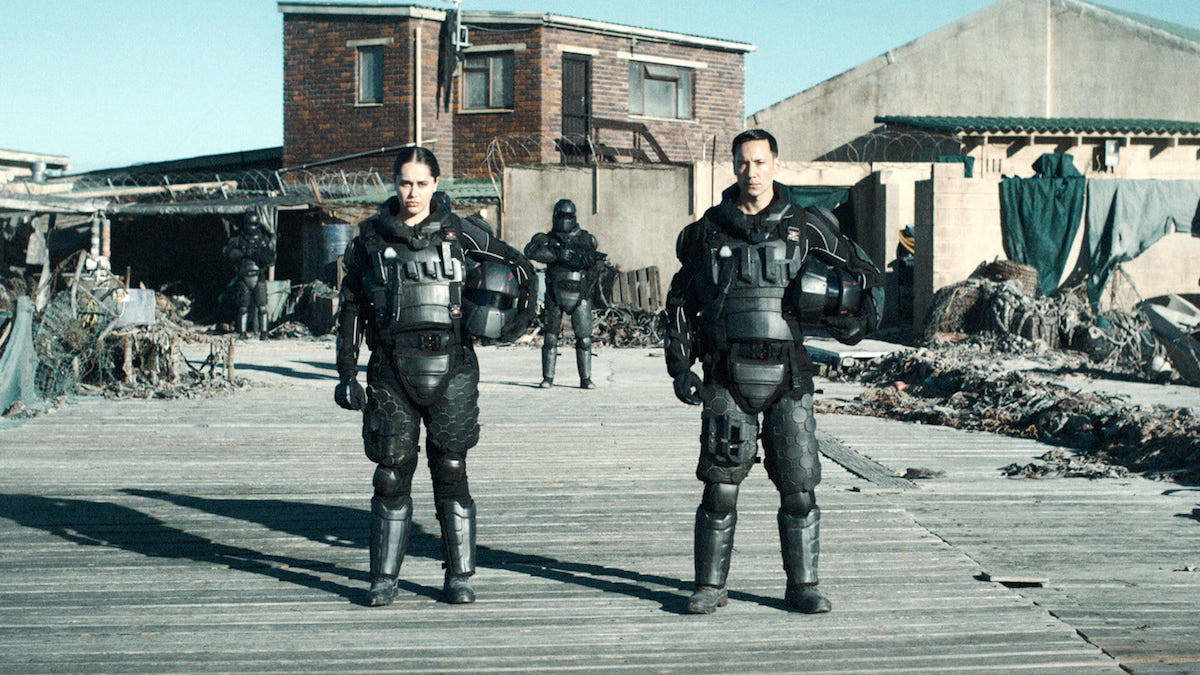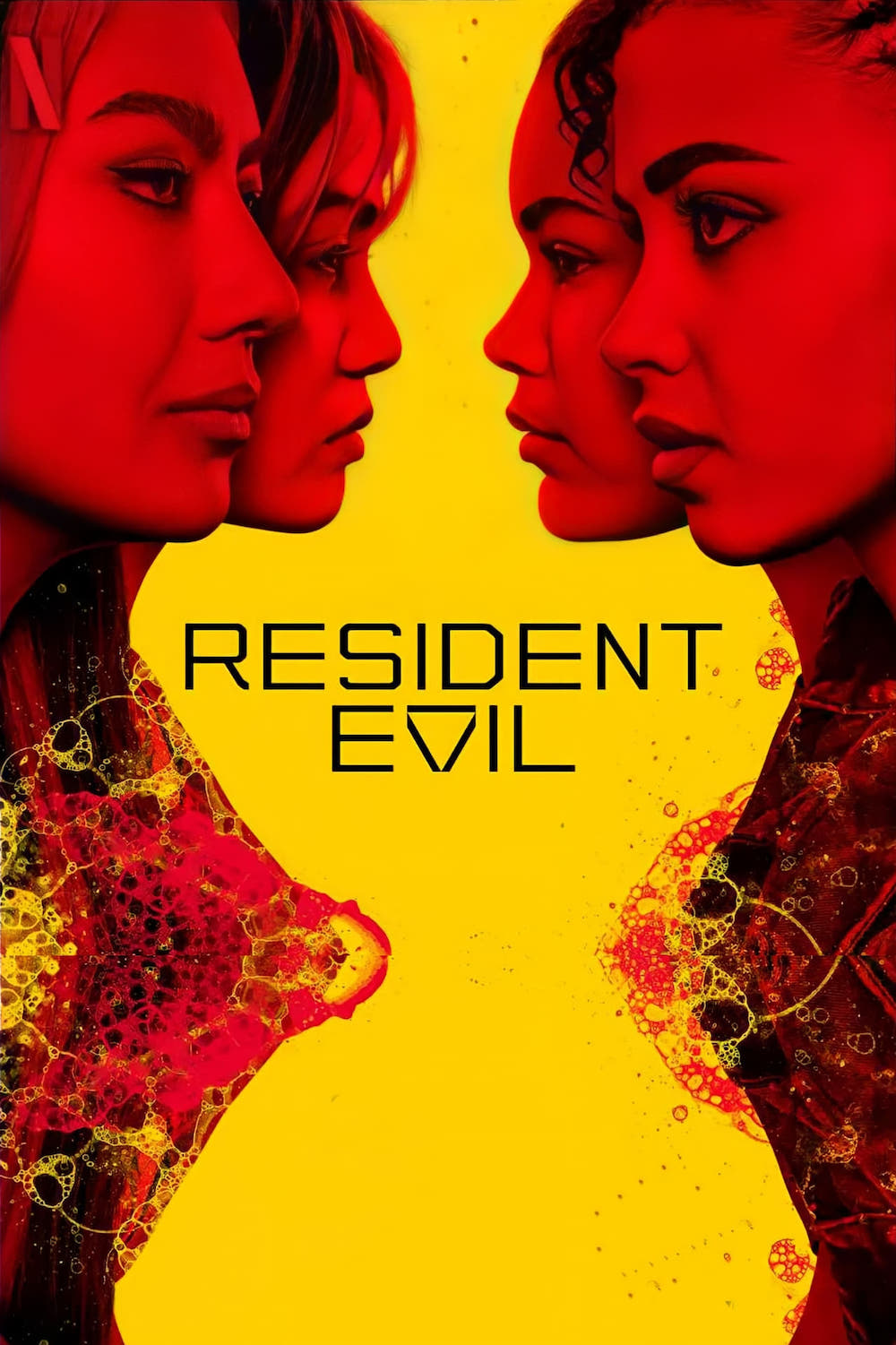RESIDENT EVIL – Season One
Nearly three decades after the discovery of the T-virus, an outbreak reveals the Umbrella Corporation's dark secrets.

Nearly three decades after the discovery of the T-virus, an outbreak reveals the Umbrella Corporation's dark secrets.


When a particular monster seemed to be in the grave, it was revitalised by AMC’s television series The Walking Dead. The success of that comic-book adaptation ushered in a new wave of zombie-inspired TV shows at an unprecedented rate—from the period horror Kingdom and high school drama All of Us Are Dead. Netflix’s Resident Evil continues the trend by infusing the undead with a strain of teen drama and a pharmaceutical company bent on world domination.
The original Resident Evil video games reinvigorated the ‘survival horror’ genre in the 1990s and, by the turn of the millennium, it had become Capcom’s most successful title. Owing much to George A. Romero’s Night of the Living Dead (1968) and its sequels, Resident Evil’s immersive storyline and grotesque monsters terrified players. A quarter of a century later, the franchise continues to mutate and spread, having already spawned several movies and animated series. Paul W.S Anderson’s Resident Evil six-movie franchise remains the financial peak, having grossed a staggering $1.3BN worldwide. However, those earlier adaptations lacked fidelity to the source material. Johannes Roberts’ recent Resident Evil: Welcome to Raccoon City (2021) was a more faithful adaptation but only focused on the key moments from the first two games, so Netflix has again hit the reset button to reimagine the franchise as an eight-episode series. Developed by Andrew Dabb (Supernatural), Resident Evil 2022 filters the franchise’s history through a complicated story that unfolds across two timelines.

The first story takes place in 2022 and follows Jade (Tamar Smart) and Billie Wesker (Siena Agueong) as they relocate to New Raccoon City—a South African planned community that houses Umbrella Corporation employees and their families—with their father Albert (Lance Reddick). As Jade and Billie adjust to their new life, Albert is working in Umbrella’s laboratories on a miracle drug with the potential to eradicate depression and anxiety and make the company billions of dollars in the process. However, Albert wants to keep it off the shelves because of its unpleasant side effects.
Meanwhile, a second story takes place in 2036 after Umbrella’s sinister experiments have infected the world with a deadly virus. An older Jade (Ella Balinska) is now a dedicated scientist conducting experiments on the infected in hopes of finding a cure, and while fighting for survival in an apocalyptic world overrun by monsters she’s haunted by her past in New Raccoon City.

The 2022 timeline is the most engaging because it focuses on uncovering the malevolent operations of the evil pharmaceutical company from a different perspective. It chooses to treat the ubiquitous zombies as an afterthought while primarily focussing on the effects of the Umbrella Corporation’s genetic malpractice. Initially, it squanders potential by focussing on the teen angst of its primary antagonists, but patience is rewarded once the story is injected with much-needed urgency. After Jade and Billie hear rumours of an incident in Tijuana, New Raccoon City becomes filled with corporate maliciousness and conspiracy theories. The episode “Home Movies” provides gripping context for newcomers and admirably attempts to recreate the intricate puzzles familiar from the video games as Jade and Billie decipher the elaborate mystery surrounding Umbrella and uncover experimentations with bio-hazardous materials. Despite its shortcomings, centring the story on Jade and Billie provides a fresh perspective and serves as a good introduction to the franchise.
While the earlier timeline is more character-driven, the future timeline thrusts Jade into episodic encounters in a post-apocalyptic wasteland. Set 14 years later, after a deadly virus created by Umbrella has almost completely eradicated the global population, approximately six billion people are also now infected with a virus that transforms them into flesh-eating zombies (known as ‘Zeroes’). Although it’s the weaker storyline, the events of the future timeline should be familiar to Resident Evil fans because, tonally and aesthetically, it echoes Resident Evil: Retribution (2012). James Foster’s (Skyfall) production design crafts a remarkable vision of a plagued London and several action sequences are spectacularly choreographed as Jade escapes harrowing encounters with the infected. However, the future narrative lacks the personality of its source material and only shows the vaguest of connections to the franchise. Disregarding the omnipresent Umbrella logo, all of the elements that made Resident Evil so iconic are mostly negligible throughout the series.

Balancing two simultaneous storylines across multiple timelines can be difficult but rewarding if done right. Acclaimed shows like The Witcher and Yellowjackets carried a series of interconnected stories across two settings incredibly well, gradually revealing twists in different eras. Unfortunately, Resident Evil’s nonlinear storytelling is hindered by poor pacing and inconsistent editing.
The earlier timeline focuses on Jade and Billie beginning their new life in New Raccoon City, which is methodically paced and relies heavily on mystery to increase suspense; whereas the future timeline follows Jade as she’s pursued across the post-apocalyptic world by hordes of the undead, meaning it’s frantically paced and significantly more action-orientated. The dual-narrative format is an interesting and ambitious decision, but the two timelines feel so different that segueing between them is jarring. The regular interruptions also undermine the dramatic tension and disrupt any momentum the series attempts to build.

What made the original Resident Evil games so haunting were the impractical camera angles that concealed the shambling hordes of zombies. A more intimate fear flowed through the characters and infected players as they turned corners and unlocked doors. What’s most disappointing about Resident Evil is that it lacks the horror and suspense that made the franchise so iconic. It never approaches that same level of terror, even though the creatures hiding in the darkness are legitimately frightening to look at. Kevin Lingenfelser’s (The Truman Show) menacing creature designs arguably surpass those featured in Resident Evil: Welcome to Raccoon City. One of the show’s most grotesque creations is the anguished character featured in the 2002 remake, Lisa Trevor, and a creature attack during “The Lights” is perhaps the most terrifying sequence of the entire series. It’s disappointing that the creatures are used so sparingly because Lingenfelser has done an incredible job of making them look faithful to their video game counterparts.
Netflix’s Resident Evil has a vastly different approach to the source material than previous versions. Some elements from the video games remain intact but there’s a frustrating restraint when delving into the franchise’s rich history. Devoted fans will be disappointed the series barely resembles anything they already know, although viewers without any knowledge of the franchise may find some enjoyable moments. There are some incredible moments of monstrous mayhem, but most are quickly forgotten due to the converging timelines. Perhaps this could have been resolved if it focused on one story instead of two. There’s still potential for Resident Evil to mutate into something audiences can really sink their teeth into… that’s if Netflix doesn’t put a bullet in its head like Cowboy Bebop.
GERMANY | 2022 | 8 EPISODES | 16:9 HD | COLOUR | ENGLISH


writers: Andrew Dabb, Mary Leah Sutton, Shane Frank, Garrett Pereda, Kerry Williamson, Lindsey Villarreal & Jeff Howard (based on the video games by Capcom).
directors: Bronwen Hughes, Rachel Goldberg, Rob Seidenglanz & Batan Silva.
starring: Lance Reddick, Ella Balinska, Tamar Smart, Siena Agudong, Adeline Rudolph & Paola Nuñez.
